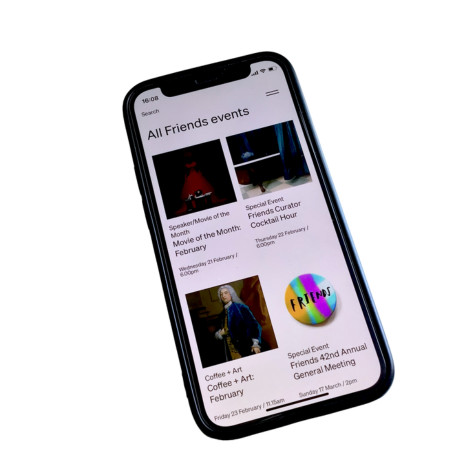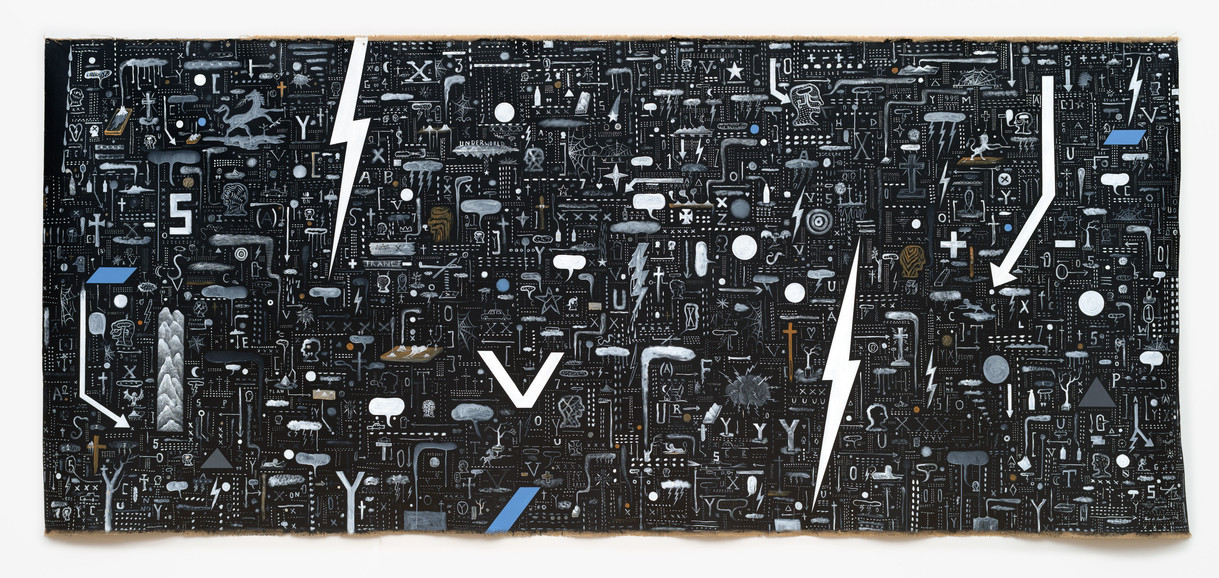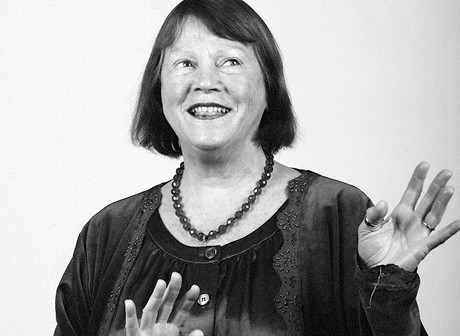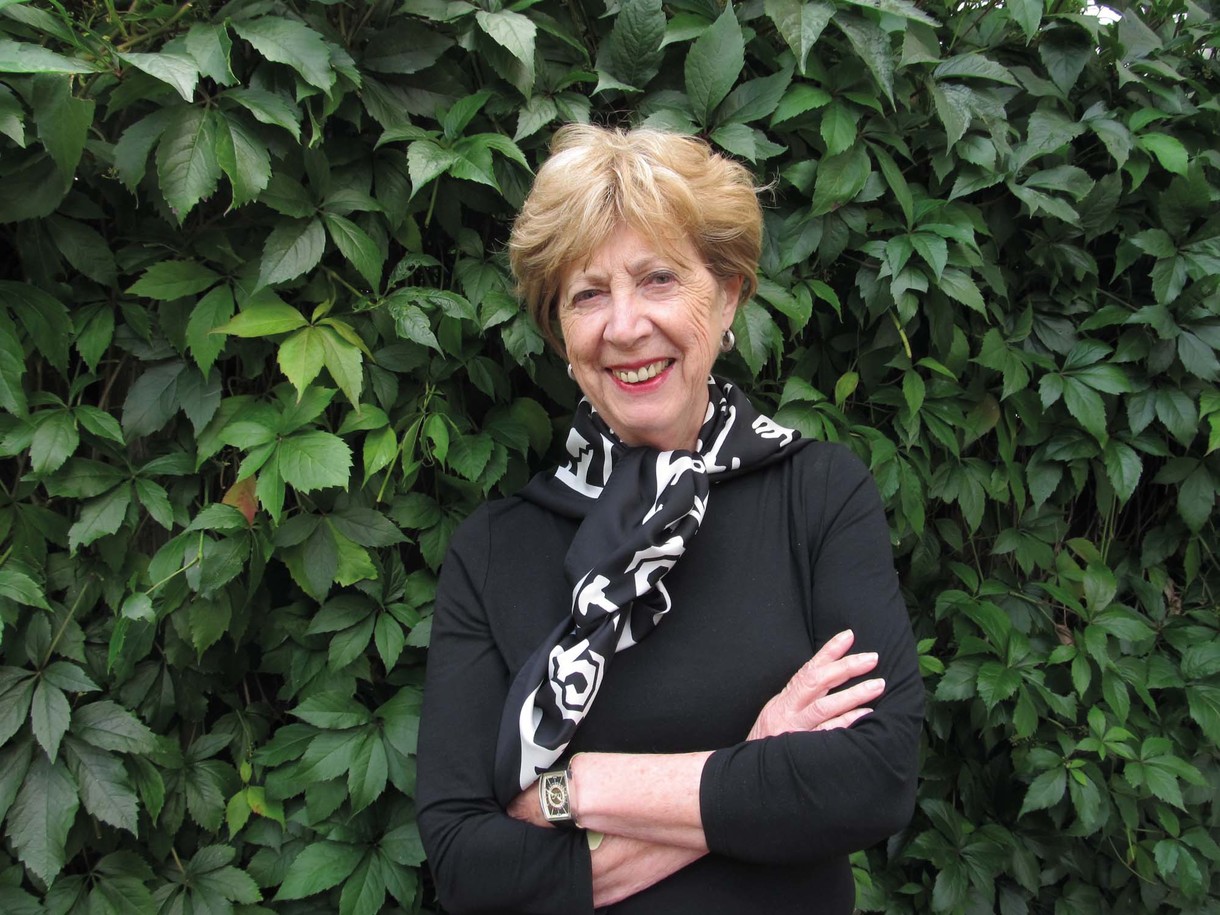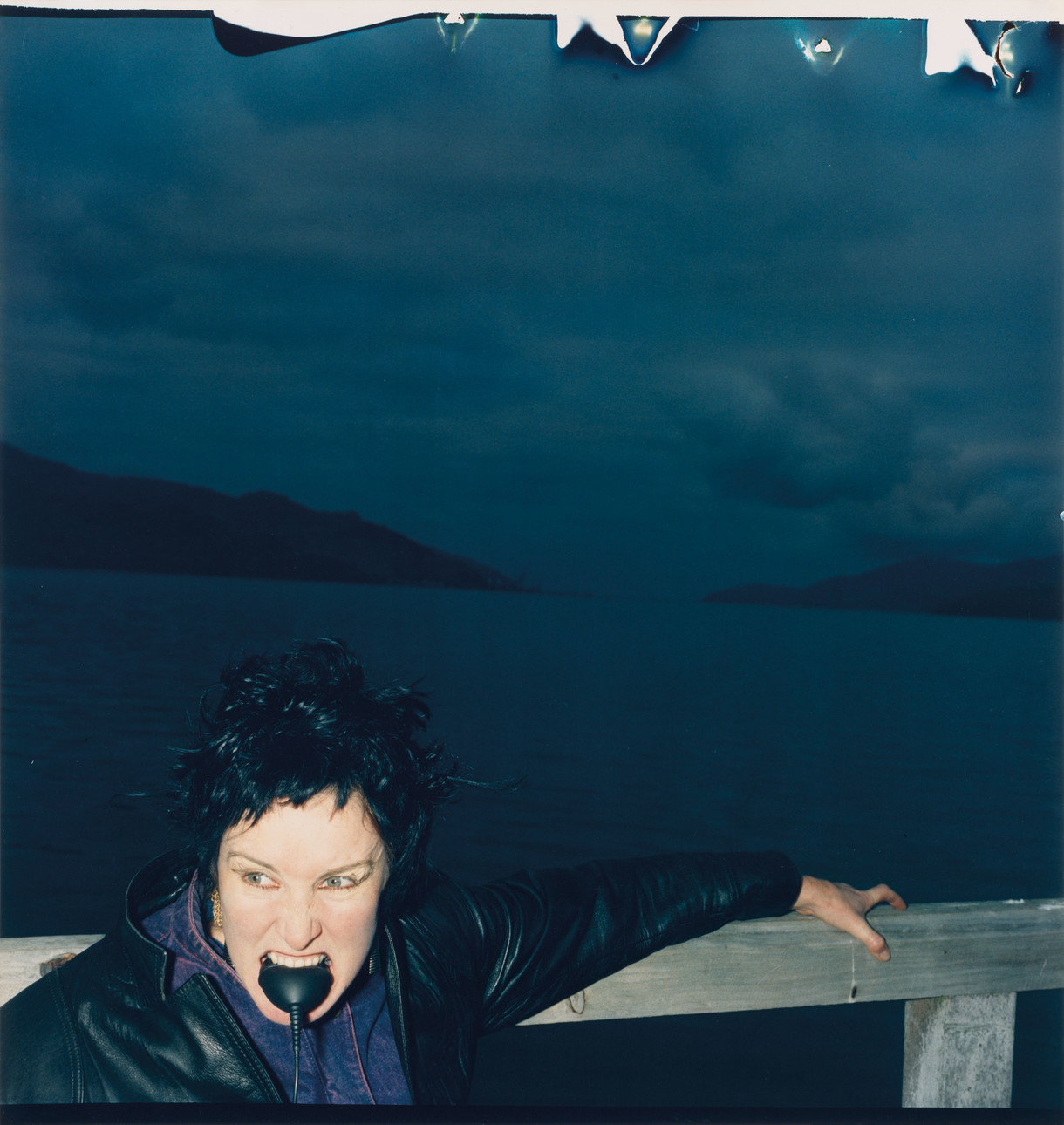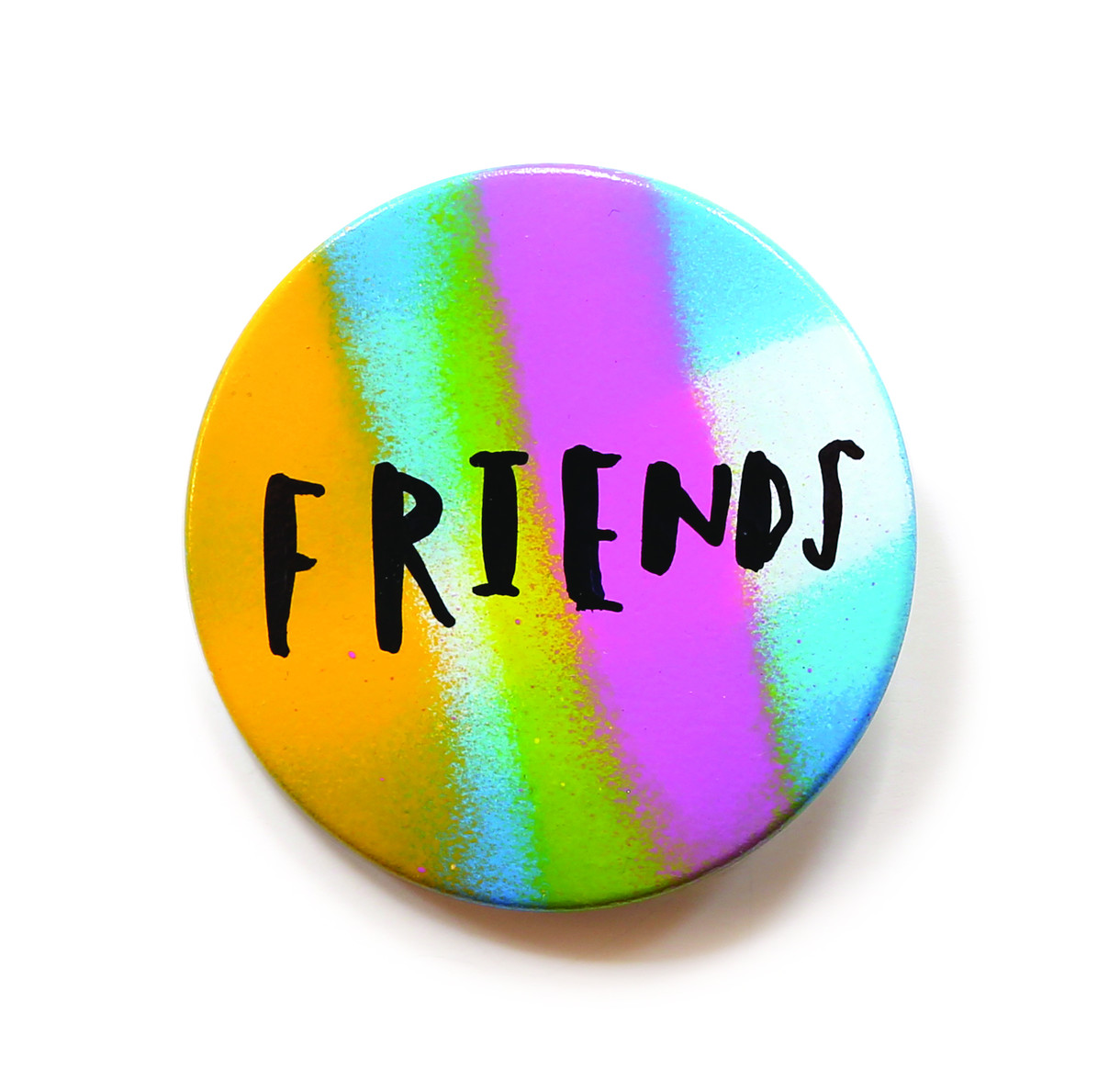B.
Walk the Beat
Interview
Volunteer guide Rod McKay talks about his life, being an art tourist, and guiding Gallery tours.
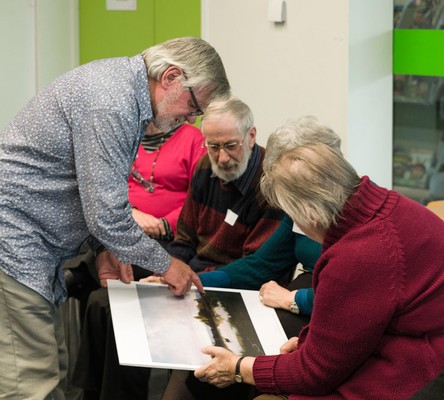
Christchurch Art Gallery guide Rod McKay introduces an artwork from the Gallery's collection to attendees at an Artzheimers session. Alzheimers Canterbury and Christchurch Art Gallery hold monthly art-appreciation groups for people with brain-degenerative diseases at the Christchurch South Library.
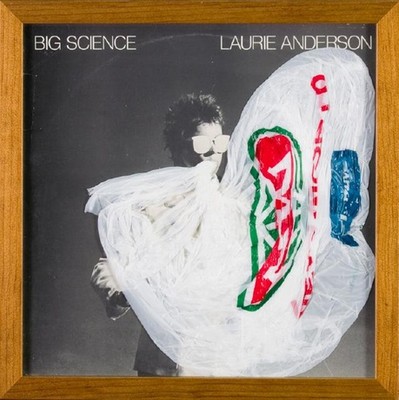
Robert Hood Laurie Anderson Big Science 2007. Album cover, vinyl and plastic bag. On loan from the Olivia Spencer Bower Foundation Award Collection.
One question I'm often asked when I guide tours is: 'How much is that piece worth?' I start by looking at the cost of the materials and the artist's time. Then I talk about how a work conveys the artist's way of looking, and how that artist's unique view makes something valuable.
I enjoy guiding school groups. Children are very good at exposing gaps in interpretations. They're great fun to work with, and they're a good way to get parents involved. I remember a holiday education programme held in the suburbs, where the children were hand-painting on big spreads of paper. There were lots of dads there that day, and one by one they came up and said: 'Am I allowed to have a go too?' It was so heart-warming and I realised just how important the Gallery outreach programmes are for introducing new people to art.
Art makes me feel optimistic for humanity, because it epitomizes striving for new understanding, and constantly evaluating where we are, and provides staging posts that show where we have been.
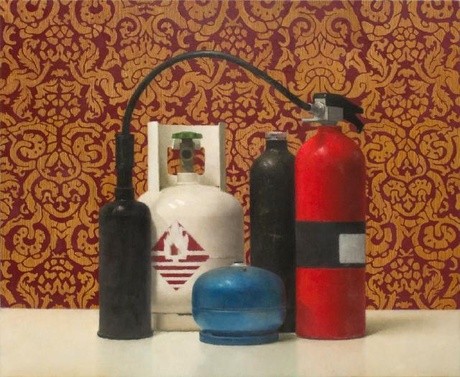
Jude Rae SL 145 2003. Oil on linen. Collection of Christchurch Art Gallery Te Puna o Waiwhetū 2005.
I also remember taking a family around the Ron Mueck show. We were talking about how changing the scale of familiar objects can change the way we look at them. Then we came to the pregnant woman 2, and this family became riveted by the piece. They walked around and around it, looking at the pores and the hairs, and they started having a conversation about the ages and stages of life. At the end of the tour the mother came to me and thanked me for introducing topics they would never have ordinarily discussed, and starting a conversation that was good for their family.
I like introducing works that are a challenge. Fiona Hall's sardine can series Paradisus Terrestris Entitled 3 is an interesting example. People would say: "What the hell is this about?" And we'd talk about it and discover all sorts of possibilities and metaphors for life.
If I was giving advice to a new guide I would say start with the artwork. Think of your tour like a piece of music, like Mussorgsky's Pictures at an Exhibition, and get the rhythm right. I prepare for a tour by thinking about how to make all the disparate parts of the tour into a whole. You want hooks that allow you to carry on a conversation, as you move from one work to the next.
I would also say try to listen. Listening is more important than telling. Think how to get people to ask questions. You don't want people to have unspoken questions, because an unasked question is a distraction. I remember Julian Dashper saying that art is about questions, not answers.
It's important to acknowledge your own opinion. I will say from the outset whether I like something, or if I find it challenging. You don't want to come across as dispassionate. I went on a guided tour in London, and the guide started out by saying: 'This is my third tour today and I'm tired. So we're going to start by looking at a work I really like'. By admitting she was human, she gave us all permission to relax.
I'm looking forward to the Gallery reopening and being able to see the artworks as they really are. We have been giving talks with copies and I find you miss important nuances. I'm also looking forward to the Gallery extending the concept of what art is for the city. I feel there is currently a truncated view of art, with things like street art being viewed as an alternative to the Gallery, when it's not an alternative, but part of the picture. The Gallery reopening will complete the spectrum of art and give people a fuller view.
I have a few favourites that I'm hoping will be on display when the Gallery reopens. There was a brilliant Leo Bensemann exhibition 4 that had only been open for a few days when the February earthquake closed the Gallery. Leo speaks to me about who we are and this place we live in, and I hope to see some of his works on display. I've already mentioned my favourite work by Jude Rae. It has depth and a back story and it is technically superb like all her work. And there is a Robert Hood work called Laurie Anderson Big Science based around a Laurie Anderson recording. It's a work with many layers. My taste is quite idiosyncratic. I'm interested in modern works and challenging art with layers of interpretation and I'm looking forward to seeing new works when the Gallery reopens.
My interest in art goes back to being a child in the country. My parents were teachers. They would arrange for art discussion packs to be sent from the University extension and organise discussion groups with the local farmers. We'd sit and talk about Constable and Rembrandt. It's quite a solitary life in the country so I think you see things more.
I started out working as a physicist. Then I taught at the University of Canterbury and developed course content. When I was working at the university I travelled a lot, and visited galleries around the world. My way of travelling is to focus on something particular, my visits to galleries, and I came back with some standout memories of art.
I remember queuing outside the Tate in London to see a pile of bricks 1. It was a very strange experience. We queued for hours and filed past these bricks. Since then I've been hooked by modern abstract art.
I've been a volunteer guide for eight years. I was a Friend of the Gallery first, and I decided to become a guide after going on a tour. I got into a conversation with the guide afterwards and she said: 'You know about art, you should think of becoming a guide yourself.'
The training was absolutely essential. I felt I was starting off as a blank page. I mean, I had looked at a lot of art, and thought about art, but I had no formal art education. The training gave me ways to engage with an artwork, plus a chance to get to know the other guides. Most of the people who became guides at the same time were reasonably confident, but virtually all of us were out of our comfort zone.
In a way having a formal art education may be a disadvantage for a guide. The role of being a guide is to help people to see a work in a new way. People visiting a gallery come at the experience from all angles. Quite a lot are tentative, they can find art quite intimidating; so the role of a guide is to converse, not to tell. I always start with the work, as that's what people are seeing. Later on other bits of background information can be introduced if people want that. I get a lot out of introducing people to the Gallery, and if they come back again, or if they say: 'I've never thought of art like that before,' I feel it has been a successful tour.
I enjoy most the interaction with the other gallery goers, and learning from the way they look at art. It shows me new ways to consider works. I remember a German couple looking at one of my favourite pieces in the Gallery, a piece by Jude Rae, a still life of a group of fire extinguishers. This couple stopped in front of it and said: 'Oh, that's a family portrait!' That comment transformed and expanded the way I looked at the work.
